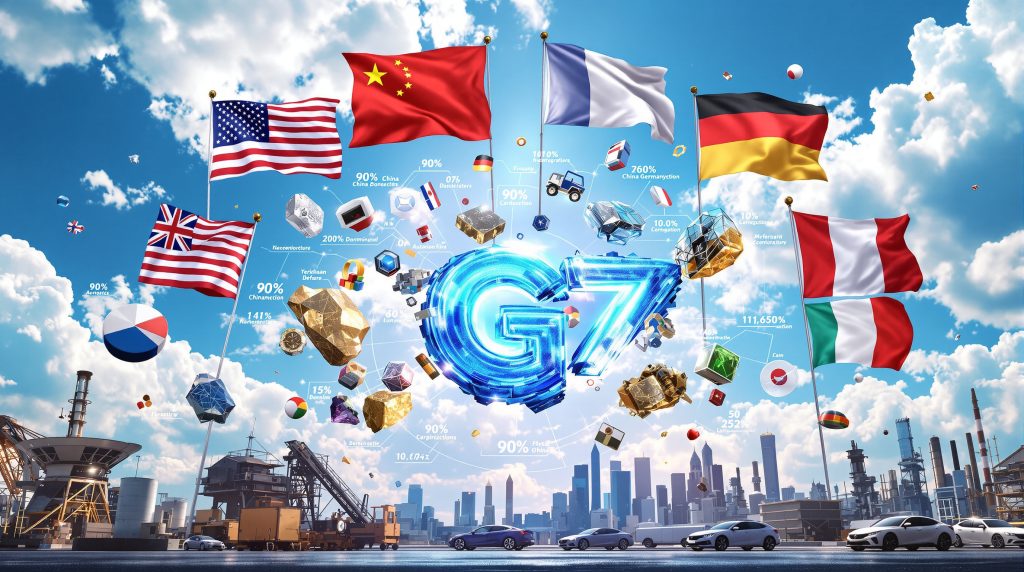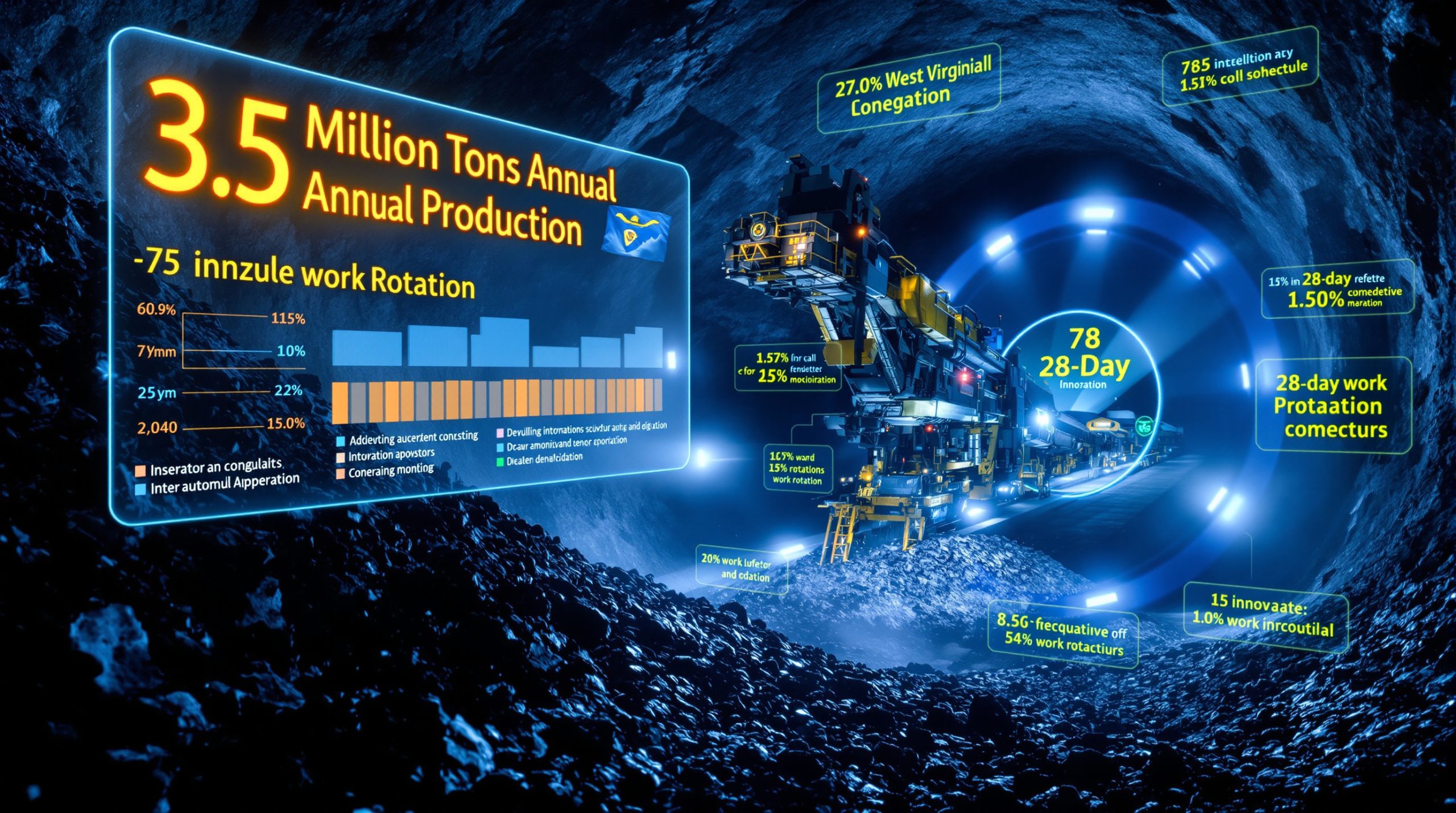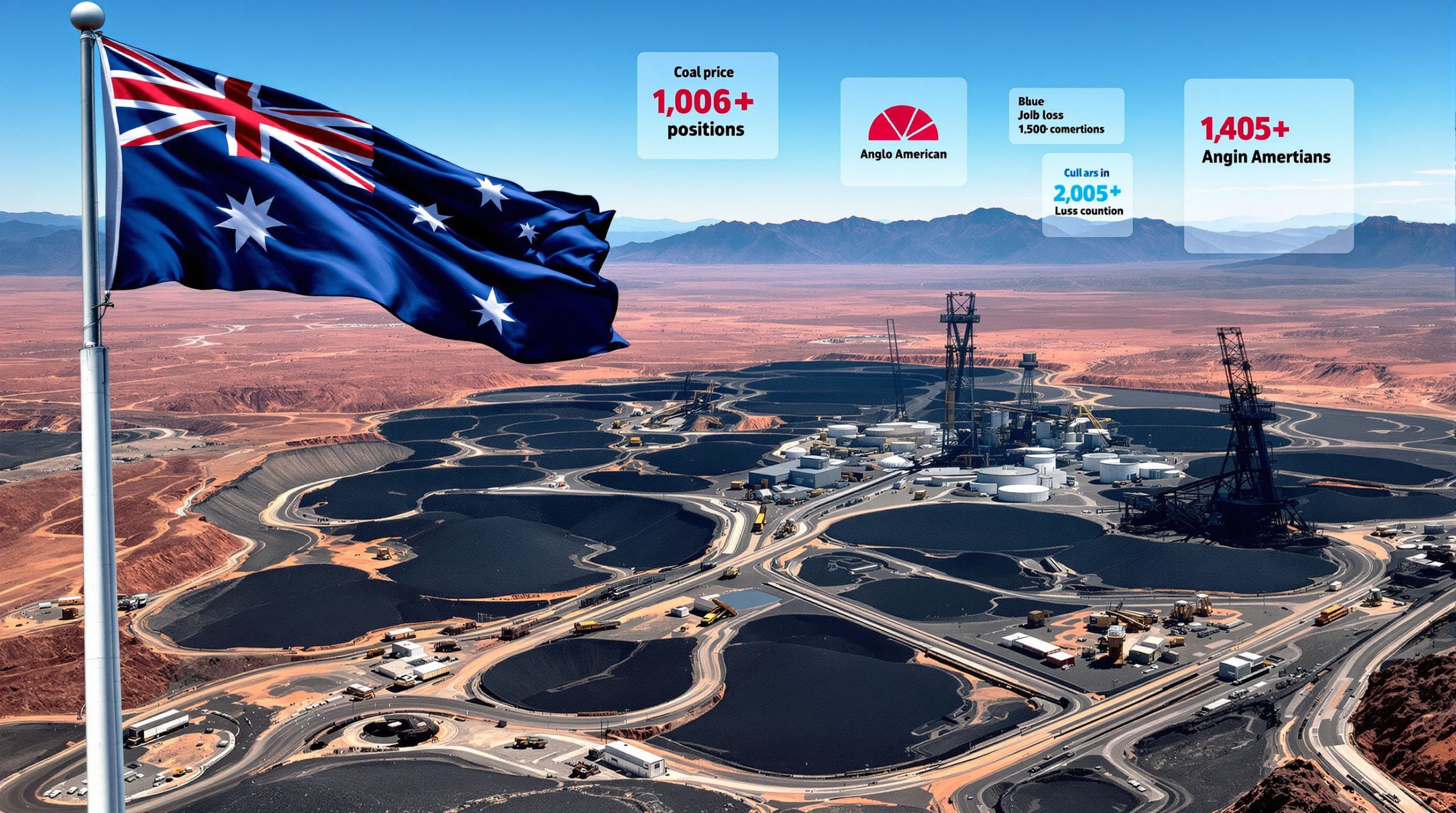The Group of Seven industrial nations are mobilising unprecedented coordination efforts as China's latest export restrictions on critical rare earth materials threaten to disrupt global supply chains across multiple strategic sectors. These comprehensive measures represent a significant escalation in mineral resource diplomacy, prompting urgent discussions among finance ministers and trade officials during their Washington meetings in October 2025. Furthermore, the G-7 response to China rare earth curbs encompasses multiple diplomatic and economic tracks designed to address both immediate supply disruptions and long-term strategic vulnerabilities.
Understanding the Strategic Mineral Crisis
China's newly implemented export controls require overseas companies to obtain government approval before exporting any products containing trace amounts of certain rare earth elements that originated in China. This regulatory framework marks a dramatic expansion of Beijing's influence over global manufacturing processes, extending far beyond traditional trade restrictions on finished goods.
Key Impact Areas:
- Semiconductor manufacturing operations
- Electric vehicle battery production
- Defence system components
- Renewable energy infrastructure
- Advanced electronics manufacturing
The timing of these restrictions caught international officials off guard, particularly since they emerged during what many believed to be ongoing tariff truce negotiations. Treasury Secretary Scott Bessent noted that US officials had assumed China would allow critical minerals to flow globally with minimal restrictions as part of broader trade discussions.
German Finance Minister Lars Klingbeil emphasised the need for G-7 nations to develop targeted responses whilst avoiding measures that could backfire on their own economies. This cautious approach reflects the complex interdependencies that characterise modern rare earth supply chains.
Moreover, this crisis has highlighted the urgent need for critical minerals energy security measures across allied nations. In addition, the European Union is accelerating plans for its European raw materials facility to reduce dependency on Chinese processing capabilities.
What Makes This Rare Earth Dispute Different From Previous Trade Tensions?
Unlike previous commercial disputes focused on consumer goods or traditional commodities, China's latest restrictions target the fundamental building blocks of modern technology infrastructure. The scope encompasses refined alloys, chemical compounds, and processed materials essential for advanced manufacturing across multiple strategic sectors.
Timeline of Escalation:
- Early October 2025: China announces expanded export restrictions
- October 11, 2025: US stock markets experience significant volatility
- October 15, 2025: G-7 finance ministers convene emergency discussions
- November 2025: Next 90-day tariff truce deadline approaches
The regulatory framework creates unprecedented bureaucratic hurdles for international companies, requiring detailed documentation and approval processes for products that may contain only minimal concentrations of restricted materials. This administrative burden extends the reach of Chinese oversight into manufacturing processes worldwide.
Market analysts have described the restrictions as fundamentally different from previous trade measures due to their potential to disrupt entire industrial ecosystems rather than individual product categories. The interconnected nature of modern supply chains means that restrictions on raw materials can cascade through multiple industries simultaneously.
Consequently, nations like Australia are expanding their critical minerals reserve capacity to provide alternative sources. However, the broader US-China trade conflict continues to complicate these efforts.
How Are G-7 Finance Ministers Structuring Their Response Strategy?
The coordinated response strategy emerging from G-7 discussions encompasses multiple diplomatic and economic tracks designed to address both immediate supply disruptions and long-term strategic vulnerabilities. Finance ministers are developing frameworks that extend beyond traditional trade negotiations to address resource security concerns.
Treasury Secretary Scott Bessent outlined plans for extensive multilateral engagement, indicating the US would seek support from European allies, Australia, Canada, India, and Asian democracies. This approach reflects recognition that effective responses require coalition building beyond the core G-7 membership.
Multi-Track Coordination Framework:
| Track | Focus Area | Key Participants |
|---|---|---|
| Diplomatic | Direct negotiations with China | US, Germany, Japan |
| Economic | Alternative supply development | All G-7 plus Australia, India |
| Technical | Standards harmonisation | EU, US, Canada |
| Strategic | Reserve coordination | Core G-7 nations |
German Finance Minister Klingbeil stressed the importance of developing common approaches that include targeted measures whilst avoiding economic self-harm. This balanced perspective acknowledges the complex trade-offs involved in responding to China's dominant position in rare earth processing.
The coordination efforts are taking place during the annual International Monetary Fund and World Bank meetings in Washington, providing opportunities for broader international engagement beyond the G-7 framework.
Furthermore, many companies are beginning to pivot to critical minerals strategies that emphasise diversification and supply chain resilience.
What Economic Vulnerabilities Do These Restrictions Expose?
The current crisis has highlighted dangerous concentrations in global rare earth supply chains, revealing systemic vulnerabilities that extend across multiple strategic industries. Market volatility following the announcement of China's restrictions demonstrates the fragility of current arrangements.
Supply Chain Concentration Analysis:
- Processing capacity heavily concentrated in China
- Limited alternative sources currently operational
- Long development timelines for new processing facilities
- Complex technical requirements for rare earth separation
US stock markets experienced significant turbulence following President Trump's threats of massive tariffs in response to China's restrictions. The market reaction only partially recovered during the following week, indicating sustained investor concerns about supply chain disruptions.
European automotive manufacturers have expressed particular concern about securing materials necessary for electric vehicle production. Italian industry lobbying groups have warned that China's rare earth restrictions could place Europe's automotive transformation at significant risk.
The interconnected nature of modern manufacturing means that disruptions in rare earth supplies can cascade through multiple industrial sectors simultaneously, creating compounding effects that extend beyond direct users of these materials.
According to G7 officials discussing joint responses, the coordination efforts represent an unprecedented level of cooperation on critical mineral security.
Which Specific Industries Face the Greatest Risk Exposure?
Several critical industrial sectors face immediate and severe risks from China's expanded export controls, with potential impacts ranging from production delays to fundamental restructuring of supply chains.
High-Risk Industrial Sectors:
-
Defence Manufacturing: Guided missile systems, radar equipment, and military communications rely heavily on rare earth elements for critical performance characteristics
-
Semiconductor Production: Advanced chip manufacturing requires ultrapure rare earth compounds for specialised applications
-
Electric Vehicle Industry: Motor magnets and battery systems depend on specific rare earth materials for performance and efficiency
-
Renewable Energy Infrastructure: Wind turbine generators and solar panel components utilise rare earth elements for optimal energy conversion
The automotive sector faces particular challenges as European and North American manufacturers have invested heavily in electric vehicle production capacity that depends on steady rare earth supplies. Industry analysts warn that production schedules could face significant delays if alternative sourcing arrangements cannot be established quickly.
Defence contractors are reviewing supply chain security protocols as rare earth shortages could impact critical military systems. The strategic nature of these applications makes supply reliability a national security consideration for G-7 nations.
What Alternative Supply Chain Solutions Are G-7 Nations Pursuing?
G-7 nations are accelerating development of alternative rare earth supply chains through multiple coordinated initiatives designed to reduce dependence on Chinese processing capabilities whilst building resilient long-term arrangements.
Strategic Supply Chain Initiatives:
-
Mining Project Acceleration: Fast-tracking rare earth extraction projects in friendly jurisdictions with streamlined regulatory approval processes
-
Processing Capacity Development: Investing in separation and refining facilities outside Chinese control with advanced technological capabilities
-
Strategic Reserve Programmes: Building government and industry stockpiles of critical materials to buffer against supply disruptions
-
Recycling Technology Enhancement: Developing advanced systems to recover rare earth elements from end-of-life products and manufacturing waste
Canada's Critical Minerals Strategy represents one of the most comprehensive national approaches, combining government support for exploration with private sector development incentives. The programme aims to establish Canada as a major alternative supplier for North American and allied markets.
Australian mining companies are expanding production capacity at existing operations whilst exploring new deposits, with government backing for projects that can supply allied nations. These developments benefit from Australia's established mining infrastructure and regulatory frameworks.
European initiatives focus on creating integrated supply chains within the EU and with trusted partners, reducing dependence on potentially unreliable sources whilst maintaining technological leadership in processing innovations.
How Might China Respond to G-7 Countermeasures?
China's potential responses to coordinated G-7 actions could range from diplomatic engagement to further tightening of export restrictions, creating complex strategic dynamics that require careful navigation by Western policymakers.
Potential Chinese Response Scenarios:
-
Negotiation Track: Engaging in direct bilateral or multilateral discussions to address underlying trade concerns whilst maintaining export control frameworks
-
Escalation Path: Expanding restrictions to additional materials or implementing more stringent approval processes for existing controls
-
Economic Leverage: Using rare earth dominance as bargaining chip in broader trade negotiations or geopolitical discussions
-
Technology Restrictions: Limiting exports of processing equipment or technical expertise needed for alternative supply chain development
Chinese officials may view G-7 coordination as justification for maintaining or strengthening export controls, particularly if they perceive the response as economically or strategically threatening to Chinese interests.
However, China's own economic interests in maintaining export revenues and global supply chain stability may provide incentives for measured responses rather than dramatic escalation. The interconnected nature of global trade creates mutual vulnerabilities that could encourage diplomatic solutions.
What Role Do Upcoming Diplomatic Meetings Play in Resolution Efforts?
Several high-level diplomatic encounters scheduled for late 2025 provide critical opportunities for addressing rare earth trade tensions through direct leader-to-leader engagement and multilateral discussions.
Key Diplomatic Schedule:
-
ASEAN Summit (Malaysia): President Trump's planned attendance provides opportunities for broader regional engagement on supply chain issues
-
APEC Leaders Meeting (South Korea): Potential Trump-Xi Jinping meeting could address rare earth restrictions directly
-
Bilateral Treasury Discussions: Treasury Secretary Bessent indicated strong possibilities for meetings with Chinese Vice Premier He Lifeng
-
G-7 Follow-up Sessions: Ongoing coordination meetings to assess response effectiveness and adjust strategies
The Asia-Pacific Economic Cooperation summit in South Korea represents a particularly significant opportunity, as President Trump is confirmed to attend and has expressed willingness to meet with Chinese President Xi Jinping. Such a meeting could provide the highest-level forum for addressing rare earth trade issues.
Treasury Secretary Bessent has indicated strong prospects for preliminary discussions with Chinese Vice Premier He Lifeng, which could establish frameworks for more comprehensive negotiations at the presidential level.
Parallel bilateral negotiations with South Korea, Canada, and India are progressing, potentially creating alternative partnership frameworks that could influence Chinese calculations about maintaining restrictive export policies.
In addition, the EU is working with G7 partners on coordinated responses to ensure unified diplomatic pressure on Beijing.
How Are Financial Markets Responding to G-7 Coordination Efforts?
Financial markets have demonstrated significant sensitivity to developments in rare earth trade tensions, with volatility reflecting investor concerns about supply chain disruptions and their potential economic impacts across multiple sectors.
Market Performance Indicators (October 15, 2025):
- Gold Futures: $4,210.20/ozt (+1.20%)
- Silver Futures: $51.55/ozt (+2.34%)
- Copper: $5.0115/lb (+0.02%)
- Platinum: $1,691.60/ozt (+1.33%)
- Palladium: $1,594.50/ozt (+0.69%)
US equity markets experienced substantial declines following President Trump's threats of massive tariffs in response to China's rare earth restrictions. The subsequent partial recovery indicates ongoing market uncertainty about the ultimate resolution of trade tensions.
Sector-Specific Market Impacts:
-
Technology Stocks: Companies dependent on rare earth materials have experienced increased volatility as investors assess supply chain risks
-
Automotive Securities: Electric vehicle manufacturers face particular scrutiny regarding material sourcing strategies
-
Defence Contractors: Market attention focused on supply chain security for military applications
-
Mining Equities: Companies with rare earth operations outside China have seen increased investor interest
Precious metals markets have generally strengthened amid broader economic uncertainty, with gold reaching new record levels above $4,200 per ounce during the period of heightened tensions.
The commodity complex more broadly reflects investor flight to real assets amid concerns about trade disruptions and supply chain fragility across multiple industrial sectors.
What Long-Term Strategic Implications Could This Crisis Create?
The current rare earth crisis may fundamentally reshape global approaches to critical mineral security, creating lasting changes in how nations and companies approach supply chain resilience and strategic resource management.
Structural Changes in Global Trade:
-
Supply Chain Regionalisation: Movement toward regional blocs with trusted suppliers rather than globally optimised but vulnerable networks
-
Strategic Stockpiling: Increased government and corporate investment in reserve capacity for critical materials
-
Technology Independence: Accelerated research into alternative materials and processing technologies to reduce dependencies
-
Alliance-Based Commerce: Strengthening of trade relationships among democratic allies whilst reducing reliance on potentially hostile suppliers
Treasury Secretary Bessent's statement that bureaucrats in China cannot manage supply chains for the rest of the world reflects a fundamental philosophical shift away from efficiency-based globalisation toward security-focused trade arrangements.
The emphasis on coordinating with European allies, Australia, Canada, India, and Asian democracies suggests the emergence of alliance-based resource security frameworks that prioritise reliability over cost optimisation.
Innovation and Technology Development:
Long-term strategic responses may accelerate innovation in rare earth recycling, alternative materials research, and domestic processing capabilities. These technological developments could eventually reduce global dependence on Chinese processing whilst creating new industrial capabilities in allied nations.
Investment patterns are likely to shift toward projects that enhance supply chain resilience even if they carry higher short-term costs compared to Chinese alternatives. This reorientation reflects recognition that supply security has become inseparable from national economic security.
Addressing Russian Sanctions and Broader G-7 Coordination
The G-7 response to China rare earth curbs discussions are occurring alongside broader coordination efforts on Russian sanctions and Ukraine support, demonstrating the interconnected nature of current geopolitical challenges facing industrial democracies.
German Finance Minister Klingbeil indicated that G-7 officials would also discuss expanding pressure on the Kremlin, particularly through increased utilisation of frozen Russian assets to support Ukraine. This parallel agenda highlights how resource security issues extend beyond rare earths to encompass broader strategic materials and energy supplies.
Integrated Strategic Response Framework:
- Rare earth supply chain security
- Russian energy independence
- Critical minerals diversification
- Ukraine reconstruction funding
The coordination of responses across multiple fronts demonstrates G-7 recognition that economic security challenges require comprehensive, multilateral approaches rather than issue-specific solutions.
Conclusion: Balancing Economic Security and Trade Stability
The G-7 response to China rare earth curbs represents a defining moment in the evolution of international economic relations, where strategic security considerations increasingly influence traditional trade relationships. The coordinated approach being developed by finance ministers reflects recognition that critical mineral access has become inseparable from national economic security.
Success in addressing this crisis will require delicate balancing of firm diplomatic responses with practical acknowledgment of current supply chain realities. The multilateral framework being constructed extends beyond traditional trade policy to encompass alliance-based resource security arrangements that could reshape global commerce patterns for decades.
Critical Success Factors:
- Sustained Coordination: Maintaining G-7 unity whilst building broader coalitions with allied nations
- Alternative Development: Accelerating viable alternative supply chains without disrupting existing production
- Diplomatic Engagement: Preserving opportunities for negotiated solutions whilst building leverage through coordination
- Market Stability: Managing transition costs and avoiding economic disruption during supply chain restructuring
The implications extend far beyond rare earth elements to fundamental questions about how democratic nations can maintain economic independence whilst participating in global markets. The solutions developed through this crisis may establish templates for addressing similar challenges across multiple strategic industries.
Consequently, the G-7 response to China rare earth curbs will likely serve as a blueprint for future coordination on critical resource security, demonstrating how allied nations can work together to address shared vulnerabilities whilst maintaining economic competitiveness.
Note: Market conditions, diplomatic schedules, and trade negotiations remain subject to rapid change. Investors and industry participants should seek current information from official government sources and recognised financial publications when making strategic decisions.
Looking for Exposure to Critical Minerals Companies?
Discovery Alert's proprietary Discovery IQ model delivers real-time notifications on significant ASX mineral discoveries, helping subscribers identify actionable opportunities in critical minerals and strategic resources ahead of the broader market. Understand why major mineral discoveries can lead to substantial market returns by exploring Discovery Alert's dedicated discoveries page, showcasing historic examples of exceptional outcomes, then begin your 30-day free trial today to position yourself ahead of evolving supply chain dynamics.




